Walter Isaacson: No one knows what exactly happened on the morning of May 6, 2010, but somewhere among the immense sea of churning data we call the stock market, something went terribly wrong. Out of nowhere, the Dow Jones Industrial Average suddenly collapsed by around 1,000 points. To put that in perspective, that’s equivalent to [00:00:30] a loss of $1 trillion. And things got weirder. In a matter of seconds, high priced stocks like Procter & Gamble oscillated wildly in price from one penny to more than $100,000 a share. And just as soon as it happened, 36 minutes later to be precise, the markets bounced back again as if it had just been a bad dream. They called it a flash crash. [00:01:00] To this day, nobody is really sure what happened that morning. What everyone can agree on though is that it almost certainly had something to do with what’s called algorithmic, or high frequency trading. It’s an innovation that’s revolutionized the way stocks are bought and sold.
Firms that trade algorithmically use powerful computers to execute huge lightning fast orders [00:01:30] in response to market conditions, hoping to gain a fractional advantage over their competitors. But these algorithms aren’t always perfect. Operating at blazing speeds, too fast for human oversight, a simple programming error could have devastating economic consequences. From what researchers have been able to ascertain, the Flash Crash all started with one ill-advised trade, which then led [00:02:00] to a software-driven domino effect. It all happened so fast that no human oversight would have ever been able to stop it. The market recovered relatively quickly from that particular flash crash, but the next one and the impact that it may have on the world economies is impossible to predict. I’m Walter Isaacson, and you’re listening to Trailblazers, an original podcast from Dell Technologies.
Speaker 2: [00:02:30] Welcome to the New York Stock Exchange.
Speaker 3: What do all these people do?
Speaker 4: Why, they buy and sell securities.
Speaker 5: I’ve been thinking about investing for some time now.
Speaker 6: I thought maybe we could get in on the ground floor.
Speaker 7: When you buy stock, you become part owner of a company.
Speaker 8: We’re confirming those 4,000 shares at 51 and an eighth.
Walter Isaacson: There’s an old [00:03:00] story that goes like this. One morning in the fall of 1929, John D. Rockefeller was getting his shoes shined on the way to work. As his wingtips were being buffed to a blinding sheen, the shoeshine boy did something that startled him. He gave the venerable captain of industry a stock tip. As soon as he heard the kid’s advice, Rockefeller went straight to his office and promptly [00:03:30] sold all of his holdings. The fact that the shoeshine boy had an opinion about what to buy and sell meant to Rockefeller that the stock market’s bubble was about to burst. And he was right. The market crashed weeks later, and the Rockefellers comfortably rode out the Great Depression.
Now, nobody knows if this is a true story or just a fiscal fairytale. Over the years, [00:04:00] it’s been attributed to Rockefeller, to J.P. Morgan, and to Joseph Kennedy. But it does illustrate an essential irony of the market. Ever since the Dutch East India Company began to sell tradable shares in the 17th century, stocks have allowed members of the public to participate in the market and invest in companies that they believe could turn them a profit. Those companies in turn have benefited from access to liquid [00:04:30] cash, allowing them to quickly raise the capital they need to expand and grow. But having wide open access means that the market is subject to the whims and crazes so complicated and unpredictable that they can be impossible to control. With the rise of innovative algorithms and artificial intelligence, the next flash crash might just be around the corner.
It was [00:05:00] the autumn of 1688, and William III, Prince of Orange, was preparing to go to war with England. The Dutch monarch was hoping to overthrow his father-in-law, King James, in a bit of family intrigue worthy of Game of Thrones. Preparations for his assault across the Channel took months and were conducted in great secrecy, but when plans leaked out shortly before the invasion was to begin, a panic spread [00:05:30] across the Dutch stock market with traders worried about maritime battles disrupting their ships loaded with profitable spices. The result was a first in financial history, although it certainly wouldn’t be the last. The stock market crashed.
Lodewijk Petram: The first company to issue stock was the Dutch East India Company.
Walter Isaacson: Lodewijk Petram is a Dutch economist, historian, and the author of The World’s First Stock Exchange.
Lodewijk Petram: [00:06:00] It was founded in 1602. That’s known, I think, by it’s Dutch abbreviation, which is VOC. You see this abbreviation not only in the Netherlands on several old buildings but also in the East Indies. What is nowadays called Indonesia, there are still buildings that you can see where this company was housed.
Walter Isaacson: The Dutch East India Company dealt in spices, which were a hot commodity in the 17th century. We might take black pepper and cinnamon for granted today, but [00:06:30] back then they were worth their weight in gold. Spice trading was a huge business and often a violent one. The VOC was as much a military operation as it was a commercial one. From a financial point of view, its innovations still shape how we do business today. The Dutch East India Company was the first company to offer tradable stock, but the idea of buying shares in an enterprise [00:07:00] actually goes back a few more centuries.
Lodewijk Petram: In the Middle Ages, companies mainly in the Italian city-states, so well-known cities like Venice and Genoa, started issuing shares. These were mainly shipping companies, companies that were very capital-intensive, and they were operating in risky business, of course. This was the 14th and 15th centuries. Tiny wooden ships were sailing over the Mediterranean Sea and over the Atlantic Ocean, so there was a high risk of shipwreck. Issuing shares [00:07:30] was a way of spreading risk.
Walter Isaacson: If your ship came in, literally, you’d split the rewards with your co-shareholders. If it didn’t, well, the loss wouldn’t be as punishing. But in all cases, the company would be liquidated after three or four years with the profits returned to investors, or not, depending on how choppy the waves had been. The Dutch East India Company was designed to last [00:08:00] a lot longer than one voyage. In fact, it thrived for almost two centuries, so anyone was permitted to sell their shares or buy more from any other investor. This turned those shares into tradable stock, and this had a democratizing effect. It wasn’t just wealthy merchants putting their money in but ordinary people as well.
Lodewijk Petram: We know exactly who invested in the Dutch East India Company since the early [00:08:30] subscription register has been preserved over time. There is indeed a lot of merchants in there, but also there are some people from tiny villages in the east of the Netherlands who invested small amounts of money.
Walter Isaacson: If you could trade in stocks, it only made sense for there to be a place for that activity to take place. So i n the early 1600s, the world’s first stock market was born.
Lodewijk Petram: This all happened on a bridge in Amsterdam. [00:09:00] If you come from the airport, for example, and travel to Amsterdam by train, the very first thing you see when you get out of Central Station is the first stock exchange, basically, that ever existed in the world.
Walter Isaacson: In a lot of ways, the trading that took place on that bridge is very similar to what goes on at exchanges all over the world today. There was one major difference though. While thousands of stocks are listed on exchanges like the NASDAQ or the New York Stock Exchange, [00:09:30] back then there was only one, the Dutch East India Company.
Lodewijk Petram: It looked a lot like what we still know today with options trading, futures trading, you name it. But at the same time, there was only one stock that was actively traded on this market.
Walter Isaacson: Exchanges soon popped up all over the world in the wake of the Amsterdam Stock Exchange as companies realized there was real value in attracting capital from investors directly. The Dutch [00:10:00] East India Company eventually fell victim to a problem we’re very familiar with today, poor corporate governance and a stubborn refusal to innovate.
Lodewijk Petram: Things went really well around 1630, 1650. Then what happened is that people got used to the high dividends. The directors of the Dutch East India Company, they also got used to the high profits, and high salary, and high dividends since they all owned [00:10:30] large amount of stock in their own company. The Dutch East India Company was not so good at adapting to new circumstances. They really stuck to what had been profitable in the early 17th century. When circumstances changed, they didn’t adapt to the new circumstances, and then at the end of the 18th century was simply a loss-making business. When the French took over in the Netherlands in the late 18th century, the company went bankrupt, and that was [00:11:00] it.
Walter Isaacson: The company’s legacy though continued to live on in stock markets and exchanges all over the world. In London, stock traders originally met at a coffee shop, their rude manners having barred them from the Royal Exchange. Eventually, a formal exchange was set up, which charged a small entrance fee for traders. In New York, 24 brokers met under a buttonwood tree in 1792 [00:11:30] and signed the Buttonwood Agreement, which formally began what is now the New York Stock Exchange. In Paris, traders moved from trading in the back of the Paris Opera to a building of their own in the early 19th century, the Paris Bourse. All those exchanges are still around today, and until very recently, the way people traded them was very much the same as they did on that bridge in Amsterdam in the 17th [00:12:00] century.
It’s an archaic, confusing, and very entertaining process. If you’ve ever watched a Hollywood movie set on Wall Street, you’ve probably wondered at the chaos of the trading pits. It was a wild sight, dozens and dozens of anxious-looking traders dressed in colorful jackets all packed together, hollering incomprehensible numbers at each other, making obscure hand gestures, and waving pads of paper. [00:12:30] This, until fairly recently, was how stock and commodities exchanges functioned. And despite the seeming chaos, it was pretty effective.
Louise Jones: It was pure adrenaline from the very first moment I stepped onto the trading floor.
Walter Isaacson: Louise Jones is a former trader on the New York Stock Exchange.
Louise Jones: Back then, there were papers flying everywhere. People were screaming. It seemed so exciting, [00:13:00] and I just wanted to be part of it.
Walter Isaacson: The utter chaos that enchanted Louise can look pretty confusing from the outside, but boiled down to its essentials, it was actually pretty simple. Some people wanted to buy, some people wanted to sell. The screaming, wildly gesturing people on the floor were there to facilitate that. The whole system was known [00:13:30] as open outcry.
Michael Gorham: Open outcry is kind of a strange word because nobody ever uses that for anything.
Walter Isaacson: Michael Gorham is the author of Electronic Exchanges: The Global Transformation from Pits to Bits.
Michael Gorham: But what it really means is that people are yelling and screaming and letting the crowd know what they want. Imagine a bunch of people standing in a pit. [00:14:00] Open outcry means that if you want to buy, you would yell out in an abbreviated form, you might say, “12 at 7.” What you’re really saying is that you are 12 shares or 12 cattle futures contracts at $5.07 or something like that. The thing is once you’ve yelled that out, then whoever is the quickest to yell back to you saying, ” [00:14:30] Buy them,” then that’s the one who will get the deal.
Walter Isaacson: Although open outcry evolved over the years, it was at its essence the exact same thing that Dutch traders did back in the 1600s. It certainly required a bit of a different skillset than today when you can just point and click on a brokerage website and complete a trade in relative serenity.
Michael Gorham: If you had a loud voice, that was better. [00:15:00] If you were tall, that was better. If you were big, that was better. It made it more likely that you would get in and be able to do that.
Louise Jones: It got very physical. There was pushing, and shoving, and screaming. You really had to be heard. You had to project your voice in a way that people knew what you had to do. I was on my feet all day. Sometimes I didn’t eat lunch or didn’t go to the ladies room [00:15:30] until the bell rang at 4:00. It was very tough to physically endure and get through a day. At the end of a really intense trading day, on your way home you would just say, “How did I possibly do that? Physically how did I get through that?” Mentally crunching all those numbers in your head all day to the accuracy that we did was quite remarkable.
Walter Isaacson: In the heat of the moment, things could [00:16:00] get a little out of hand.
Michael Gorham: I still remember this one time where one guy, he got so excited that he accidentally put his pencil through the cheek of somebody standing right next to him. These kind of things would take place all the time. Obviously this doesn’t happen with electronic trading, but it was very colorful.
Walter Isaacson: With so much information to deal with, a huge margin of error, and a high value [00:16:30] placed on being able to complete deals quickly, digitization was inevitable. But it wasn’t the existing exchanges that pulled the markets into the digital era. In fact, they had a vested interest in keeping things just as they were.
Michael Gorham: Today, all of these exchanges are publicly traded companies, but back then, a members only exchange. The members got to decide what was going to happen. [00:17:00] Since the members knew how to make a living yelling and screaming at each other, the last thing in the world that they wanted to do is to make things electronic because while they know how to make a living standing in a pit, being able to do the same thing trading on screens, etc., that was going to be much more difficult. That would be good for their kids but not for them.
Walter Isaacson: It ultimately was smaller logistical concerns [00:17:30] that would be responsible for bringing about the full computerization of the markets. In Germany and Switzerland, the innovation happened almost as a side effect of various regional banks being unable to decide where to put the new derivatives exchanges they were launching.
Michael Gorham: All of the existing banks, each of them wanted to have this exchange put in their own town. What they realized [00:18:00] is that if they created an exchange that was just in cyberspace as a way of solving the problem of who’s going to get this new exchange.
Walter Isaacson: With the rise of NASDAQ, the world’s first entirely electronic exchange in the 1970s, the writing was on the wall for the boisterous old system of open outcry. Eventually, the other large markets followed suit with major [00:18:30] exchanges going digital throughout the ’80s and ’90s. One very big innovation changed the face of trading forever, spelling the doom of the old system for good, the same innovation that’s disrupted so many industries over the last few decades, the internet. Now anyone could log on and buy or sell equities or whatever other financial products they desired [00:19:00] for a matter of a few dollars. While the traders on the floor didn’t become totally extinct, the need for their services was drastically reduced. Not long after, new innovations in trading have to some degree removed the human factor completely with some very interesting and potentially alarming consequences.
In October of 2010, the Securities and Exchange Commission issued a report [00:19:30] on the causes of the mysterious trillion dollar flash crash that had rocked the financial markets five months earlier. According to their conclusions, the day’s events had all come down to a single poorly executed trade. An unnamed firm had sold off $4 billion worth of futures contracts, a sale that would usually be executed over several hours. But thanks to a computer glitch, [00:20:00] they were instead sold off in a matter of minutes. That’s when the algorithmically-driven software that powers many of the larger trading firms buying and selling went a little nuts. With so many contracts on the market at once, their prices plunged. A hot potato effect occurred with the contracts passing from one pair of hands to another so fast, they eventually ended up on the floor. When everyone else [00:20:30] in the stock market saw those prices dropping so fast, they stopped buying, and the prices of everything plunged. It all started with some wonky software.
David Whitcomb: You need to build layers of protection against making dumb decisions because computers only do what they’re programmed to do.
Walter Isaacson: David Whitcomb is the founder [00:21:00] of Automated Trading Desk.
David Whitcomb: If you don’t anticipate a possible event, if you let enough time go by, that event may happen, and you may be caught out by it.
Walter Isaacson: David’s company is known as the very first to perform what is now called algorithmic or high frequency trading, an innovation that has revolutionized the way stocks are traded. But his original idea when he founded the company in the late ’80s [00:21:30] was simply to automate what was then a costly human-driven process.
David Whitcomb: I thought that an expert system that is a fully automated computer system could do the same work that the high paid folks do for routine trades.
Walter Isaacson: What he quickly realized is that the speed and efficiency [00:22:00] that the software brought to the process could lead to a whole new kind of trading, one that took advantages of tiny fluctuations in the market to make a profit.
David Whitcomb: Rather than focus on buying x thousand shares of this, selling y thousand shares of that, we decided it was better to try and look for opportunities to buy and then fairly [00:22:30] quickly, usually within the day, sell off a position and try to make a profit.
Walter Isaacson: High frequency trading was born, and it was highly profitable. Automated Trading Desk made an astounding number of trades every day, searching for those tiny margins that would add up to big profits. By 2007, David’s company alone accounted for 7% of all [00:23:00] the activities on the New York Stock Exchange and NASDAQ. But as the Flash Crash would later prove, with so much relying on software algorithms and so much trading volume, even a small mistake could be very costly. In 2003, the company was nearly bankrupted by a simple mistake.
David Whitcomb: One of the programmers was working late one night, and I guess [00:23:30] he got tired. He didn’t check his work. He put a minus sign where he should’ve put a plus sign. What that meant was that when we thought we were buying, we were actually selling. We suddenly lost a lot of money. The programmer recognized his error. [00:24:00] It took him 52 seconds, but that’s pretty quick. I wouldn’t have got it that fast, I’m sure.
Walter Isaacson: Another minute or two and it could’ve been curtains for David’s whole company. But despite the occasional glitch, algorithmic trading has been a very profitable innovation. With software analyzing data and basing stock picks on the information gleaned, it has led to the inevitable question, can advances in artificial [00:24:30] intelligence refine the science of predicting the market even further?
Babak Hodjat: About 11 years ago, my co-founder famously was taking a shower and had this idea of what if we had a scalable AI system? He defined scale as the more processing capacity you throw at it, it becomes more powerful.
Walter Isaacson: Babak Hodjat is the co-founder and chief executive officer [00:25:00] of Sentient Technologies.
Babak Hodjat: We were thinking, “Well, where should we apply this?” For a number of different reasons, we decided that the problem of trading in the stock market is quite fascinating, exciting, and there’s room to make a lot of money there.
Walter Isaacson: Babak’s company is one of the first to apply the analytical power of artificial intelligence to understanding and predicting the complex movements of the stock market. One of their chief applications [00:25:30] is an AI-driven equity fund that uses machine learning to optimize an approach to picking and selling stocks.
Babak Hodjat: The approach that we’re using is an evolutionary approach, which means that we try out many, many different trading strategies, and we keep the ones that are working better. We take bits and pieces of those strategies, put them together into new strategies, and go through many, many generations of such traders [00:26:00] until we find traders that are acceptable. This happens a that very, very large scale in parallel.
Walter Isaacson: One advantage of AI trading is the ability to run simulated models over and over again to work out the kinks in the system, something you could never do with an actual human being. For that reason, Babak trusts the Sentient AI with his own money.
Babak Hodjat: Yes, I do have my own money being [00:26:30] traded by this system, and it’s doing quite well. I would trust this system because I know the rigor by which the system is tested. When you put that against a human trader at frequencies that this decision making is just impossible for humans, then of course putting that against a human trader, I would go with the machine.
Walter Isaacson: Although it’s still in its early stages, the future of investing [00:27:00] may indeed lie with the machines. With artificial intelligence being developed for reasons as diverse as facial recognition and music composition, it makes sense that it could be applied to one of our society’s favorite and most enduring activities, making money. But with millions of computer-selected trades being executed at the speed of thought, there’s always going to be an element of the unknown, even [00:27:30] if it’s a result of human error. The 2010 Flash Crash lasted only 36 minutes, but the next could have more serious consequences. Even with the potential dangers of a flash crash, however, the digital takeover of the stock market is clearly here to stay, leaving traders all over the world asking whether this new digitally-fueled stock market can actually defy the laws of physics, [00:28:00] becoming a place where what goes up never comes down.
I’m Walter Isaacson, and you’ve been listening to Trailblazers, an original podcast from Dell Technologies. If you want to find out more about anything we talked about on today’s show, head to our website at delltechnologies.com/trailblazers where you can find additional information about all of our guests, [00:28:30] as well as a transcript of the show. Again, that’s delltechnologies.com/trailblazers. Thanks for listening.
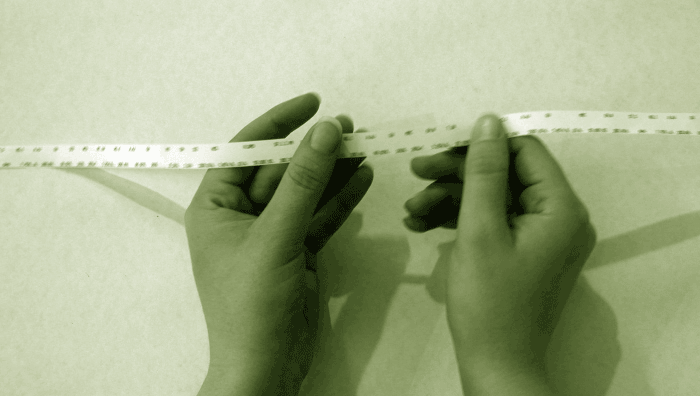 Taking stock of where we’ve come from.
Taking stock of where we’ve come from. Wall Street, and wall-to-wall chaos.
Wall Street, and wall-to-wall chaos.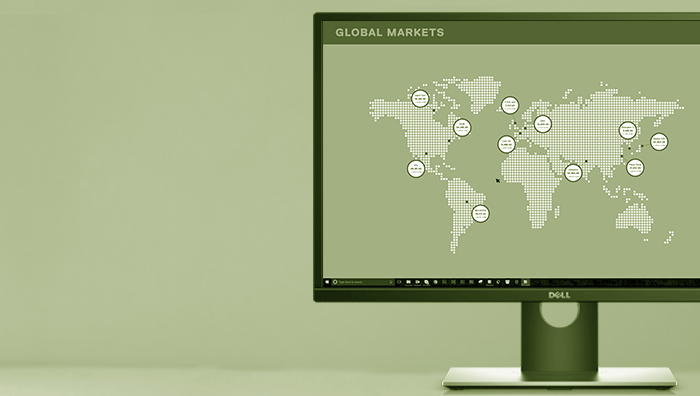 A saner, swifter way to make money moves.
A saner, swifter way to make money moves. Lodewijk Petram
is a Dutch economist and historian and the author of The World’s First Stock Exchange.
Lodewijk Petram
is a Dutch economist and historian and the author of The World’s First Stock Exchange.
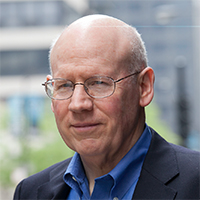 Michael Gorham
is an Industry Professor and Director of the IIT at Illinois Institute of Technology and co-author of Electronic Exchanges: The Global Transformation from Pits to Bit.
Michael Gorham
is an Industry Professor and Director of the IIT at Illinois Institute of Technology and co-author of Electronic Exchanges: The Global Transformation from Pits to Bit.
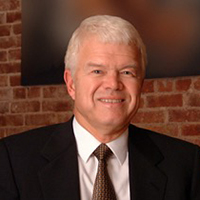 David Whitcomb
is Professor of Finance Emeritus at Rutgers University and founder of Automated Trading Desk - the first machine learning system for fully automated limit order trading of securities.
David Whitcomb
is Professor of Finance Emeritus at Rutgers University and founder of Automated Trading Desk - the first machine learning system for fully automated limit order trading of securities.
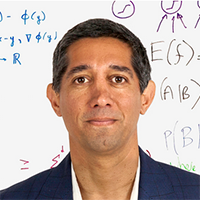 Babak Hodjat
is the co-founder and chief executive officer of Sentient, responsible for the core technology behind the world’s largest distributed artificial intelligence system.
Babak Hodjat
is the co-founder and chief executive officer of Sentient, responsible for the core technology behind the world’s largest distributed artificial intelligence system.
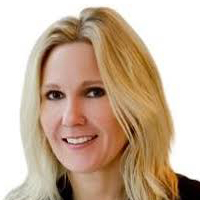 Louise Jones
was a former NYSE stock trader, co-founded the largest independent Floor Brokerage Operation on the NYSE, and spearheaded implementation of hand-held technology on the trading floor.
Louise Jones
was a former NYSE stock trader, co-founded the largest independent Floor Brokerage Operation on the NYSE, and spearheaded implementation of hand-held technology on the trading floor.